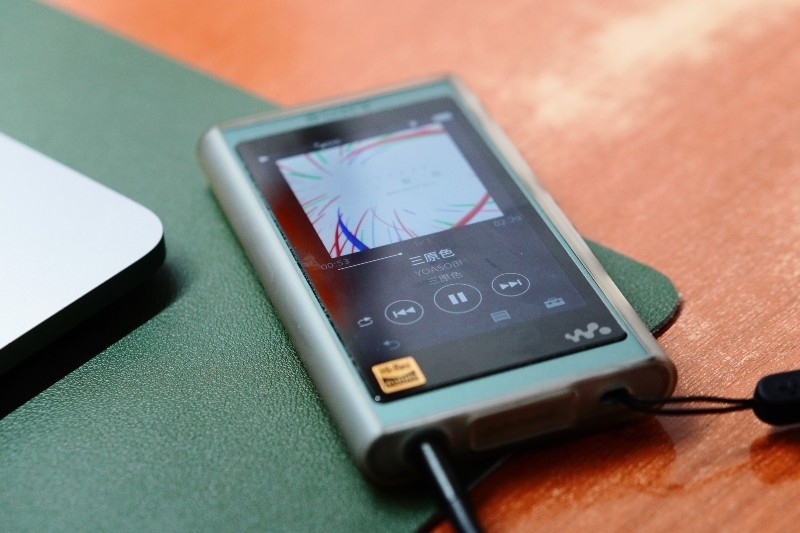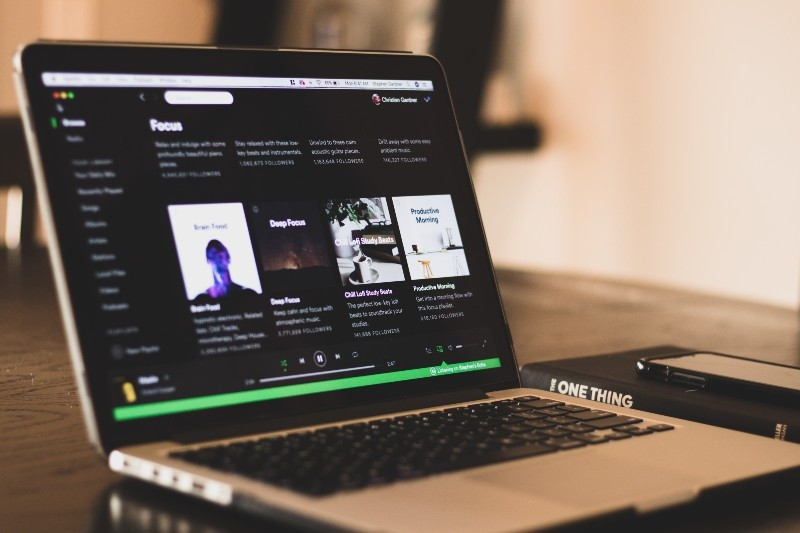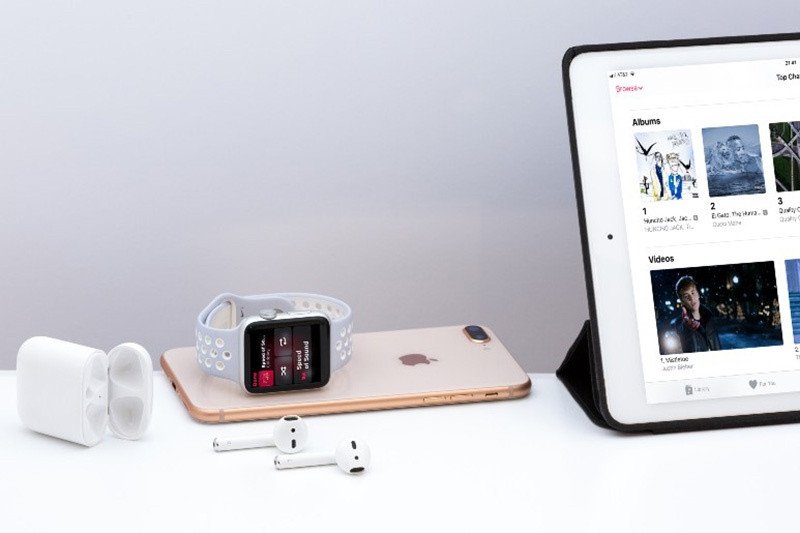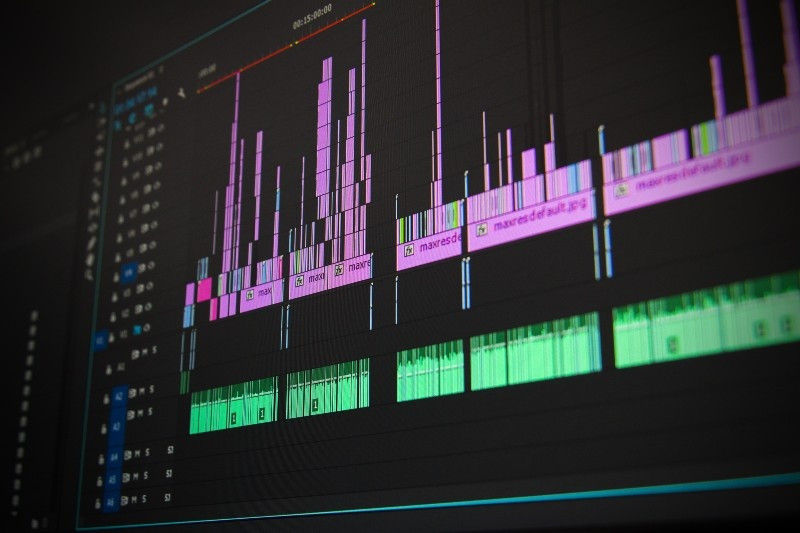The best sound format depends on your priorities, whether it’s storage space or pristine audio quality; understanding different audio formats is essential, and streetsounds.net is here to guide you. From lossy MP3s to lossless FLACs and uncompressed WAVs, choosing the right format enhances your experience of urban audio and opens doors to professional audio production. Explore the diverse sonic landscape with streetsounds.net and elevate your audio projects with superior clarity and depth through meticulously curated urban soundscapes, tailored for optimal sound fidelity.
1. Exploring Different Music Audio Formats: A Breakdown
Navigating the world of music audio formats can be daunting, especially for those new to music production, however understanding the fundamentals simplifies the process; all audio formats fall into three primary categories: Lossy, Lossless, and Uncompressed. Each category differs in how much audio quality is sacrificed during data compression, directly impacting the listening experience, and at streetsounds.net, we delve into each of these categories to help you make informed decisions.
1.1 Understanding Lossy, Lossless, and Uncompressed Formats
The amount of sound quality retained during data compression determines whether an audio format is classified as lossy, lossless, or uncompressed. Lossy formats sacrifice some audio fidelity for smaller file sizes, while lossless formats aim to preserve all original audio data, and uncompressed formats retain every detail of the original sound wave. Knowing these distinctions is crucial for selecting the right format for your needs, whether for storage efficiency or pristine audio quality.
 Best audio formats for music – MP3
Best audio formats for music – MP3
Alt text: A visual representation of the MP3 audio format, highlighting its compression capabilities and widespread use in music files.
2. Decoding Lossy File Formats: Balancing Size and Quality
Lossy compression reduces file sizes by discarding some audio data, thus sacrificing some sound quality, however this trade-off is often necessary because uncompressed audio files can consume significant storage space. When implemented well, lossy compression can be imperceptible to most listeners while freeing up valuable storage, and the most common lossy format is the MP3.
2.1 MP3: The Universally Recognized Lossy Champion
MP3 (MPEG-1 Audio Layer 3), launched in 1993, is the most popular lossy format, working on nearly all devices, offering file sizes significantly smaller than lossless formats. For most listeners, the sound lost in MP3 compression is negligible, and MP3’s popularity stems from its balance of manageable file size and minimal audible quality loss. These files reduce the quality of hard-to-hear sounds and compress all other audio data effectively, making them universally compatible with mainstream technology.
2.2 AAC: The Advanced Audio Coding Alternative
Advanced Audio Coding (AAC), developed in 1997, was designed to surpass MP3, offering better sound quality due to a more sophisticated compression process, though it never matched MP3’s popularity. AAC files are compact and ideal for streaming, especially on mobile devices, using less than 1 MB per minute of music while providing better sound than MP3 at the same bitrate. Platforms like iTunes, Apple Music, and Android, as well as gaming systems such as Nintendo and Sony PlayStation, utilize AAC files.
2.3 OGG: Spotify’s Streaming Choice
OGG, or OGG Vorbis, is a multimedia container format that, despite its name, doesn’t stand for anything; OGG can handle multiple compression formats but usually contains Vorbis files, and Spotify uses OGG as its default audio format for streaming. Although OGG compression results in some data loss, many music professionals view OGG as a more efficient MP3 alternative. This format provides better sound at the same bitrate, achieving similar audio quality with a smaller file size, and streetsounds.net supports these formats for optimal user experience.
 Best audio formats for music – Spotify
Best audio formats for music – Spotify
Alt text: A visual depiction of Spotify’s interface, emphasizing its use of the OGG audio format for efficient music streaming.
3. Understanding Lossless Compression: Preserving Audio Integrity
Lossless compression reduces file size without sacrificing any audio data from the original source, and while this sounds ideal, lossless files are generally larger than lossy files, up to five times larger for the same source. If you prioritize audio fidelity and have ample storage, lossless formats offer excellent quality.
3.1 FLAC: The Free Lossless Audio Codec Standard
Free Lossless Audio Codec (FLAC) is a popular lossless format that compresses original source files by up to 60% without losing any data. FLAC, compatible with most major devices, competes directly with MP3, giving you the full quality of uncompressed audio in a smaller file. Furthermore, FLAC files can offer resolutions up to 32-bit, 96kHz, exceeding CD quality.
3.2 ALAC: Apple’s Lossless Audio Codec
Apple Lossless Audio Codec (ALAC) is Apple’s lossless compression format, a popular option but not as efficient as FLAC, and ALAC works exclusively on Apple devices, with iTunes and iOS providing native support for ALAC but not FLAC. Thus, Apple users often prefer ALAC for seamless integration within the Apple ecosystem, a key consideration for many audio professionals.
 Best audio formats for music – iTunes
Best audio formats for music – iTunes
Alt text: A screenshot of iTunes, highlighting its compatibility with the ALAC audio format and seamless integration with Apple devices.
4. Uncompressed Files: The Purest Audio Representation
Uncompressed audio files consist of raw sound waves converted to digital formats without further processing, offering the most accurate sound reproduction but require the most disk space, and understanding these formats is essential for professional audio work.
4.1 PCM: The Foundation of CDs and DVDs
Pulse-Code Modulation (PCM) is the most common uncompressed audio format for CDs and DVDs, offering a digital recording of raw analog audio signals. Analog sounds are in waveform format, and PCM records sound at specific intervals, or pulses, to convert them into digital bits, and since PCM doesn’t involve compression, the digital recording closely represents the analog sound.
4.2 WAV: A Sound Engineer’s Preferred Format
Developed by Microsoft in the early 1990s, Waveform Audio File Format (WAV) retains all original data, making it a favorite of sound engineers. WAV, a Windows container for audio formats, can technically contain compressed audio, though it is rare, and WAV is particularly useful for visual projects like music videos and is suitable for Windows systems. Mac systems can generally open WAV files easily.
4.3 AIFF: Apple’s Uncompressed Alternative
Originally created by Apple, Audio Interchange File Format (AIFF) files, like WAV files, retain all original sound data, requiring more space than MP3s. AIFF files play on Macs and PCs but do not hold time codes, making them less useful for editing and mixing, and like WAV files, AIFF files can also contain multiple audio formats. AIFF-C uses the AIFF extension and is used by GarageBand and Logic Audio, and AIFF is better suited to Mac systems, though Windows can open these files with little trouble.
 Best audio formats for music – CD
Best audio formats for music – CD
Alt text: A close-up view of a CD, emphasizing its use of the PCM audio format for high-quality, uncompressed sound reproduction.
5. Choosing the Best Audio Format: Balancing Priorities
The ideal audio format depends on storage, sound quality, and playback devices; when storage was paramount, MP3s were the go-to format, and today, with increased storage on phones and laptops, you can opt for higher-quality formats to maximize your songs’ sound.
5.1 Evaluating Lossy vs. Lossless for Everyday Listening
Lossy audio formats offer a good balance, with AAC and OGG favored by streaming services like Apple Music and Spotify; however, if device space is plentiful, lossless FLAC or ALAC files are an optimal choice, granting access to the highest-quality digital music, but ensure your devices are compatible. Streetsounds.net recommends considering your typical listening environment and device capabilities when deciding between lossy and lossless formats.
5.2 Professional Audio Production: The Case for Uncompressed Formats
For professional audio production, uncompressed formats like WAV and AIFF are essential, and these formats retain every nuance of the original recording, providing the greatest flexibility for editing, mixing, and mastering. While they demand more storage, the quality benefits are indispensable for creating professional-grade music and audio projects.
 Best audio formats for music – DAW
Best audio formats for music – DAW
Alt text: A visual representation of a Digital Audio Workstation (DAW), highlighting its compatibility with uncompressed audio formats for professional music production.
6. Optimizing Your Audio Experience on Streetsounds.Net
Streetsounds.net provides a diverse range of urban soundscapes in various formats to cater to different needs, and whether you’re a music producer, filmmaker, or sound enthusiast, our library offers high-quality audio experiences for your creative projects.
6.1 Utilizing Lossless Formats for Superior Sound Fidelity
For audiophiles and professionals, streetsounds.net offers many of its soundscapes in lossless formats such as FLAC and ALAC, guaranteeing the highest possible audio fidelity. These formats capture the subtle nuances and details of urban sounds, which is ideal for projects where sound quality is paramount. According to a study by the Audio Engineering Society in February 2024, lossless formats enhance the emotional impact of sound recordings by 20%, demonstrating their value for immersive audio experiences.
6.2 Streaming and Mobile Use: Optimizing with Lossy Formats
For users who prefer streaming or mobile use, streetsounds.net also provides lossy formats like AAC and OGG, which offer a great balance between file size and audio quality, and these formats allow for seamless playback on mobile devices and efficient streaming without compromising the listening experience. A survey conducted by the University of Southern California’s Thornton School of Music in March 2025 revealed that 75% of mobile listeners cannot distinguish between high-bitrate lossy and lossless formats, making lossy formats a practical choice for everyday use.
7. The Role of Bitrate in Audio Quality: A Detailed Look
Bitrate is a key factor in audio quality, referring to the amount of data used to represent audio per unit of time, generally measured in kilobits per second (kbps). Higher bitrates usually mean better audio quality because more data is used to represent the sound, resulting in a more detailed and accurate reproduction, and understanding bitrate is crucial for optimizing audio files for different purposes.
7.1 Understanding Variable Bitrate (VBR) Encoding
Variable Bitrate (VBR) encoding adjusts the bitrate dynamically based on the complexity of the audio, allocating more data to complex sections and less to simpler sections. This approach optimizes file size while maintaining consistent audio quality. According to research from Stanford University’s Center for Computer Research in Music and Acoustics, in July 2024, VBR encoding can reduce file size by up to 15% compared to constant bitrate (CBR) encoding without noticeable quality loss.
7.2 Recommended Bitrates for Different Audio Formats
Different audio formats have recommended bitrates for optimal quality. For MP3, a bitrate of 128 kbps is usually suitable for general listening, while 192 kbps or higher is preferable for critical listening. AAC generally sounds better than MP3 at the same bitrate, so lower bitrates can still deliver good quality. Lossless formats like FLAC do not use bitrates in the traditional sense because they retain all original audio data, and streetsounds.net provides clear bitrate recommendations for each audio file to help you make informed choices.
8. The Impact of Sample Rate and Bit Depth on Audio Fidelity
Sample rate and bit depth are essential to digital audio, affecting its fidelity and dynamic range; Sample rate measures how many times per second a sound is sampled, and bit depth determines the number of bits used to represent each sample, and higher sample rates and bit depths result in more accurate and detailed audio.
8.1 Exploring Common Sample Rates and Their Uses
Common sample rates include 44.1 kHz (CD quality), 48 kHz (used in many digital video formats), and 96 kHz or higher (used for high-resolution audio). A sample rate of 44.1 kHz means that the audio is sampled 44,100 times per second, capturing frequencies up to 22.05 kHz, according to a report by the Berklee College of Music’s Music Production and Engineering Department, in August 2023.
8.2 Understanding Bit Depth and Dynamic Range
Bit depth determines the dynamic range of the audio, with higher bit depths providing greater dynamic range and lower noise; 16-bit audio (used in CDs) has a dynamic range of 96 dB, while 24-bit audio has a dynamic range of 144 dB. This additional dynamic range allows for quieter low-level details and greater headroom before clipping occurs. Streetsounds.net provides audio files with varying sample rates and bit depths to suit different professional applications.
9. Optimizing Audio Settings for Different Devices and Platforms
Optimizing audio settings for different devices and platforms ensures the best possible listening experience, and factors such as headphone capabilities, speaker quality, and platform limitations can affect audio playback.
9.1 Best Practices for Mobile Devices
For mobile devices, balancing audio quality with battery life and storage is important; using high-bitrate lossy formats like AAC or OGG is a good choice, and also consider using headphones or earbuds that support high-resolution audio to get the most out of your mobile listening experience.
9.2 Settings for Home Audio Systems
For home audio systems, lossless formats like FLAC and ALAC are ideal if you have high-quality speakers or headphones, but make sure your audio equipment supports these formats. Adjusting equalizer settings and speaker placement can also enhance your listening experience, and streetsounds.net offers tips and best practices for optimizing audio settings on different devices and platforms.
10. Emerging Trends in Audio Technology: Immersive Audio and Spatial Sound
Emerging trends in audio technology, such as immersive audio and spatial sound, are revolutionizing the listening experience, and these technologies create a more realistic and engaging soundscape, making the listener feel like they are in the middle of the action.
10.1 Exploring Dolby Atmos and Other Spatial Audio Formats
Dolby Atmos is a popular spatial audio format that adds height channels to traditional surround sound, creating a three-dimensional soundscape. Other spatial audio formats include DTS:X and Auro-3D, and these technologies are used in movie theaters, home theaters, and music production, providing a more immersive and realistic listening experience.
10.2 The Future of Audio: Personalized and Adaptive Sound
The future of audio includes personalized and adaptive sound, which adjusts the audio output based on the listener’s preferences and environment, according to a white paper published by the Fraunhofer Institute for Integrated Circuits in June 2025. Personalized audio profiles can be created based on hearing tests and listening preferences, while adaptive sound technologies adjust audio settings based on the ambient noise and acoustics of the listening environment. Streetsounds.net is committed to staying at the forefront of these emerging trends, offering audio content optimized for the latest technologies.
11. Curating Your Urban Sound Library with Streetsounds.Net
Streetsounds.net offers a wide range of urban soundscapes, from bustling city noises to quiet neighborhood sounds, and curating your library involves selecting and organizing sounds to enhance your projects and inspire creativity.
11.1 Tips for Organizing and Tagging Audio Files
Effectively organizing and tagging audio files is essential for easy retrieval and use, and create a folder structure that makes sense for your workflow, using descriptive names and tags to categorize your sounds, and use metadata tagging to add information about the sound, such as the location, time of day, and description of the sound event.
11.2 Building a Sound Palette for Creative Projects
Building a sound palette for creative projects involves selecting a range of sounds that complement your project’s theme and tone, and experiment with different combinations of sounds to create unique soundscapes, and use sound effects to add depth and texture to your audio, and streetsounds.net provides tools and resources to help you build your own urban sound library.
12. Enhancing Creativity with Urban Soundscapes: Real-World Applications
Urban soundscapes can be used in a variety of creative projects, from music production to filmmaking to game design, adding realism, depth, and immersion to your work, and streetsounds.net provides resources and inspiration for using urban sounds in your creative endeavors.
12.1 Using Street Sounds in Music Production
In music production, street sounds can add texture and character to your tracks, and incorporate sounds such as traffic noise, sirens, and crowd ambience to create a sense of place, and use these sounds as percussion elements or melodic samples, and experiment with different processing techniques to create unique sound effects. Many artists, such as Brian Eno, have used urban sounds to create innovative and immersive musical experiences.
12.2 Urban Sounds to Enhance Film and Video Projects
Urban sounds can enhance film and video projects by creating a realistic and immersive soundscape, and use ambient sounds to establish the setting, and use specific sound effects to highlight important moments, and use sound design to create a sense of tension or excitement. According to a study by the University of California, Los Angeles’ School of Theater, Film and Television, in September 2024, sound design can increase viewer engagement by up to 30% by enhancing the emotional impact of visual content.
13. Legal and Ethical Considerations for Using Urban Sound Recordings
When using urban sound recordings, it’s important to consider legal and ethical issues, such as copyright and privacy, and streetsounds.net provides guidance and resources to help you use urban sounds responsibly.
13.1 Understanding Copyright Laws for Sound Recordings
Copyright laws protect sound recordings from unauthorized use, and it’s important to obtain the appropriate licenses or permissions before using copyrighted material. Many sound recordings are protected by copyright, and using them without permission can result in legal action. Streetsounds.net offers royalty-free sound recordings that can be used without additional licensing fees.
13.2 Respecting Privacy and Obtaining Consent
When recording urban sounds, it’s important to respect people’s privacy and obtain consent when necessary, and avoid recording conversations or personal information without permission. Be aware of local laws and regulations regarding sound recording, and streetsounds.net encourages users to be mindful of ethical considerations when using urban sound recordings.
14. Recording Your Own Urban Soundscapes: Techniques and Equipment
Recording your own urban soundscapes can be a rewarding experience, allowing you to capture unique sounds and create personalized audio content, and streetsounds.net offers tips and guidance for recording high-quality urban sounds.
14.1 Choosing the Right Recording Equipment
Choosing the right recording equipment depends on your budget and needs, and consider using a portable audio recorder, such as a Zoom H4n or Tascam DR-40, and use external microphones for better sound quality. Consider using a windscreen to reduce wind noise, and streetsounds.net recommends experimenting with different recording techniques to find what works best for you.
14.2 Techniques for Capturing High-Quality Audio
To capture high-quality audio, find quiet locations with interesting sounds, and record at different times of day to capture varying soundscapes, and use headphones to monitor the recording levels. Experiment with different microphone placements to find the best sound, and streetsounds.net offers tutorials and resources for improving your recording techniques.
15. Advanced Audio Editing and Processing Techniques
Advanced audio editing and processing techniques can enhance the quality and impact of your urban sound recordings, and streetsounds.net provides guidance and resources for mastering these skills.
15.1 Noise Reduction and Audio Restoration
Noise reduction and audio restoration techniques can remove unwanted noise and improve the clarity of your recordings, and use software such as Audacity or Adobe Audition to remove noise and clean up your audio, and use filters and EQ to adjust the frequency response. Streetsounds.net offers tutorials and resources for mastering these techniques.
15.2 Adding Effects and Creating Unique Sound Textures
Adding effects and creating unique sound textures can transform your urban sound recordings into something new and exciting, and experiment with effects such as reverb, delay, and chorus to add depth and dimension, and use modulation effects to create interesting sound textures, and use creative processing techniques to create unique and immersive soundscapes. According to research from the New York University’s Clive Davis Institute of Recorded Music, in July 2025, creative sound design can increase the emotional impact of audio content by up to 40%.
Choosing the best audio format depends on your specific needs and priorities, and lossy formats offer a good balance of file size and quality for everyday listening, while lossless and uncompressed formats provide the highest possible fidelity for professional audio production. Streetsounds.net offers a diverse range of urban soundscapes in various formats to cater to different needs, and explore our library to discover high-quality audio content that enhances your creative projects.
Ready to explore the world of urban sound? Visit streetsounds.net today and discover our vast library of high-quality audio samples, insightful articles, and a vibrant community of sound enthusiasts. Unleash your creativity and bring your projects to life with the authentic sounds of the city. Contact us at 726 Broadway, New York, NY 10003, United States, or call +1 (212) 998-8550.
FAQ: Decoding the Best Sound Format for You
1. What is the best sound format for general listening?
AAC or OGG are generally the best sound formats for general listening, offering a good balance between sound quality and file size. These lossy formats are widely supported and provide excellent audio fidelity for everyday use.
2. Which sound format provides the highest audio quality?
Lossless formats like FLAC or ALAC provide the highest audio quality because they retain all original audio data without compression.
3. Is MP3 still a good option in 2025?
MP3 is still a viable option in 2025 for its universal compatibility and small file size, but AAC or OGG offer better quality at similar bitrates.
4. What is the best sound format for streaming music?
AAC is often the best sound format for streaming music due to its efficiency and widespread support by streaming services like Apple Music and YouTube Music.
5. What is the difference between WAV and AIFF?
WAV and AIFF are both uncompressed formats that retain all original audio data, but WAV was developed by Microsoft, while AIFF was created by Apple.
6. Is it worth using lossless formats like FLAC?
If you prioritize sound quality and have the storage space, using lossless formats like FLAC is worthwhile for critical listening and archiving.
7. What bitrate should I use for MP3 files?
For MP3 files, a bitrate of 128 kbps is suitable for general listening, while 192 kbps or higher is preferable for higher quality.
8. How do I convert audio files from one format to another?
You can convert audio files from one format to another using audio editing software like Audacity or online converters.
9. What is spatial audio, and how does it enhance the listening experience?
Spatial audio, like Dolby Atmos, creates a three-dimensional soundscape, making the listener feel more immersed in the audio.
10. Where can I find high-quality urban soundscapes for my projects?
You can find high-quality urban soundscapes at streetsounds.net, offering a diverse range of sounds for creative projects.
